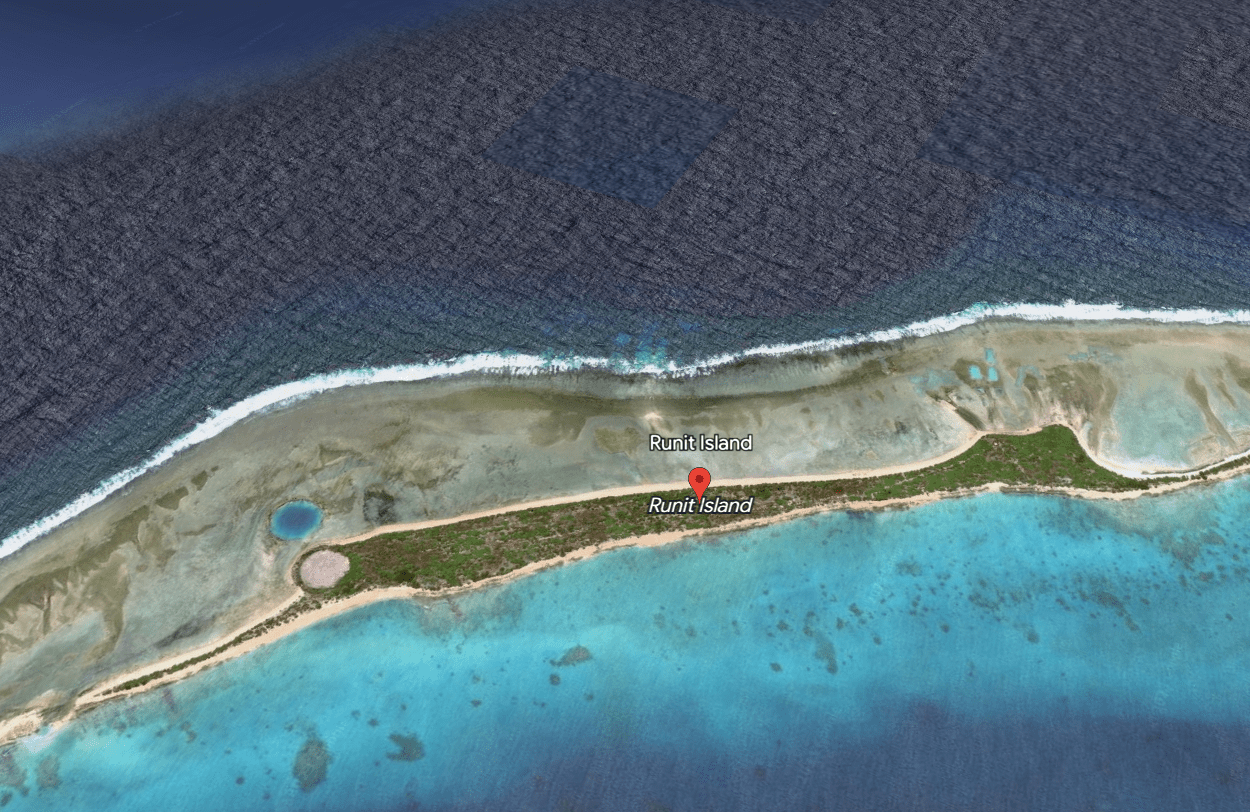Deep in the Pacific, on a lonely bunch of islands, there lies a “nuclear coffin” that’s been trying to contain a pit of radioactive waste since some of the first atomic bomb tests. Decades on from the blasts that tore through this idyllic pocket of the planet, the makeshift solution is starting to show its age – and has the potential to cause some real problems in the coming years.
Small parts of the Marshall Islands in the Pacific Ocean, roughly halfway between Papua New Guinea and Hawaii, are still more radioactive than Chernobyl due to the 67 nuclear bombs the US dropped on the Bikini and Enewetak Atolls between 1946 and 1958.
One of these blasts – Castle Bravo, the biggest nuclear explosion ever unleashed by the US – raised hell on Bikini Atoll on March 1, 1954, with a force almost 1,000 times that of the Hiroshima and Nagasaki bombs.
Towards the end of the 1970s, heaps of irradiated soil and debris from six different islands (along with tons of contaminated soil from Nevada) were transported to a giant pit on Runit Island, one of the forty islands of the Enewetak Atoll, where it was blended with concrete and encased in a dome.
The Runit Dome, aka the Cactus Dome or simply just The Tomb, is a 45-centimeter (17-inch) thick concrete dome with a 115-meter (377-foot) diameter. In satellite images, below, the dome sticks out like an alien object against the lush tropical backdrop of Runit Island.
The dome can be seen on the left tip of Runit Island. Image credit: Google Earth.
While the dome was only meant to be a temporary solution, it has remained for decades – and it’s starting to show signs of old age. An investigation in 2019 found that the dome is covered in cracks that are worsening due to rising temperatures in the Pacific.
Rising sea levels are also lapping at the shores of Runit Island, eroding the concrete and causing it to bleed radioactive material into the surrounding soil and waters. The situation became so severe that UN Secretary-General Antonio Guterres said in 2019 that he was extremely worried about radiation leeching into the Pacific.
“As long as the plutonium stays put under the dome, it won’t be a large new source of radiation to the Pacific Ocean,” Ken Buesseler, a world-renowned expert in marine radioactivity at Woods Hole Oceanographic Institution, said in 2020.
“But a lot depends on future sea-level rise and how things like storms and seasonal high tides affect the flow of water in and out of the dome. It’s a small source right now, but we need to monitor it more regularly to understand what’s happening, and get the data directly to the affected communities in the region,” explained Buesseler.
If the problem deepens, it’s likely to flare up a number of old political grievances. Although remote, other parts of the Marshall Islands are home to thousands of people, and it’s clear the dropping of atomic bombs has had a horrific impact on their lives. Cancer rates, for instance, significantly increased in some parts of the islands, perhaps as a result of the radiation.
Due to the high levels of radiation in the area, many people were forced to pack up their stuff and move. The US military withdrew from the region in 1986 and said it would pay for any people in the Marshall Islands that need to resettle due to their nuclear test program.
However, many argue that these retributions weren’t enough and the US has failed to take full responsibility for the scale of the carnage caused here.
Writing in Scientific American in 2022, two scientists at Columbia University who study radiation in the area argued that the US Congress needs to fund independent research on radioactive contamination in Marshall and draw up a plan on how to resolve the situation.
Part of this, no doubt, will have to address the problem of the Runit Dome before it’s too late.
Source Link: The "Nuclear Coffin" On Runit Island Is Still Haunting The Pacific
